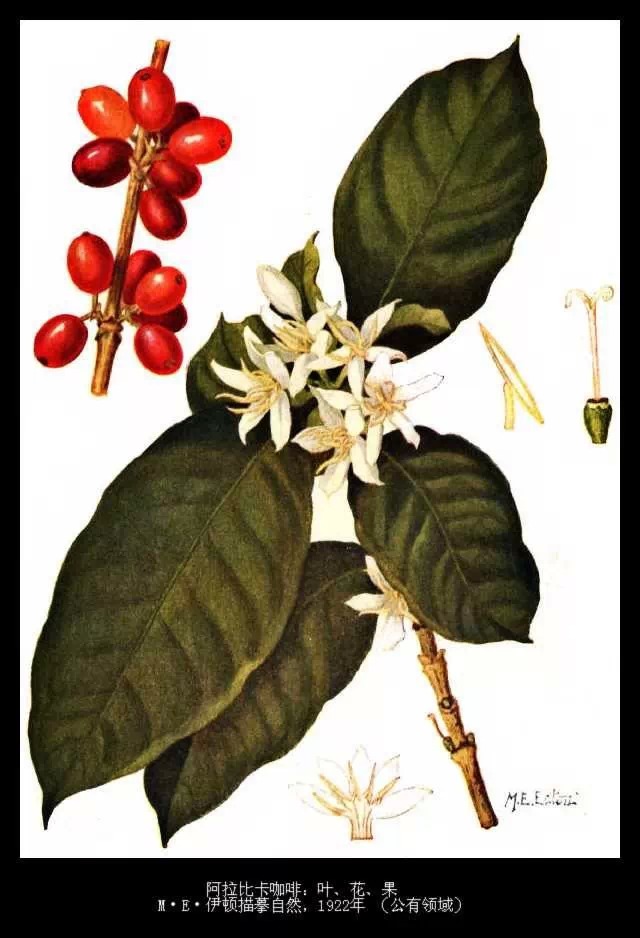How coffee changes the world

As the most popular brain-awakening drug in the world, coffee has a strong cultural attraction, no matter from its meticulous preparation process or its unknown history. Maybe Americans needed a founding father to teach them how to make coffee until Mark Pandgrast published "extraordinary: the History of Coffee and how Coffee has transformed our World (Common Library)" in 1999. Coffee's rich historical heritage and anthropology began to flourish.

In the latest update, Pandgrast paints a beautiful backdrop for the story that takes place on a Guatemalan coffee plantation at 4500 feet above sea level:
I knocked open the pod of a ripe coffee fruit in my mouth and tasted the sweet slime in it.
It takes a little work for the tongue to remove the rough peel that protects the bean germ. Coffee beans, like peanuts, usually have two kernels. After spitting out the peel, I finally got two beans. The beans are covered with a fine translucent silver skin. In some places, when there is a lack of boron in the soil, I may find a single nut, which people call peanut berries. Some people think that the flavor of peanut berries is a little more intense. I spit out nuts. They are too hard to chew.
I heard the whole family of other harvesters talking and singing in Spanish. This is a happy season.
A year of hard work-pruning, fertilizing, weeding, cultivating soil, and repairing roads and pipes-all boils down to the ripening of coffee beans. I sang a ballad with a few words in Spanish: my dear flower.

However, beneath this romantic picture of the prosperity of the community, there is a grim reality of futile work on this unimaginably labor-intensive crop. This episode, in fact, typically points out the paradoxes in the coffee making process:
The skinny woman carried a surprisingly large bag that weighed twice as much as they weighed eighty pounds. Some women even tie their babies to their breasts with strips of cloth. An adult picker can harvest more than 200 pounds of coffee a day and earn $8, more than twice the minimum daily income in Guatemala.
In Guatemala, the gap between the rich and the poor is significant. The distribution of land is one-sided. Those who do the hardest work do not make a profit. But there is no quick and effective solution to this series of inequalities rooted in the economic system, and there is no alternative to coffee that can be grown in this mountainous area. In many ways, however, workers are more satisfied than their American counterparts. They have a strong sense of tradition and the concept of family life.
While the workers were reaping the harvest, I thought about the ironic fact that once processed, the beans would travel thousands of miles, bringing pleasure to those who enjoyed their way of life. They enjoy a way of life that these Guatemalan workers cannot imagine. However, in this scene, it is unfair to label one group of people as "victims" and another as "victims". I realized that nothing in this story would be easy.

The story is indeed quite complicated-it is incomparably complex. As the most valuable commodity in the world, coffee provides livelihood security for nearly 125 million people engaged in various coffee-related industries. However, this separates the beautiful background in which work is carried out from the unnatural land of economic distribution around it:
Most people who do these repetitive tasks work in beautiful places; however, they earn an average of $3 a day. Many people live in poverty, without electricity, water, medical care and nutrition. The coffee they prepared went to breakfast tables, offices and high-end coffee bars in the United States, Europe, Japan and other developed countries. Consumers in metropolises usually spend a day's wages in the third world on a cappuccino.

Pandergrast provides us with a brief history of coffee that is culturally attractive and inevitably entangled with controversial politics:
Coffee spread from its hometown in Africa to the whole world along the equator, occupying all the plains and mountains of Scorpio and Capricorn. Coffee, in the form of a hot drink, dissolves into the soil conditions in which it grows and the degree of baking of the fruit; people drink coffee and enjoy its sweet fragrance in bitterness, the boost of thinking, and the adhesive that promotes communication. In many cases, coffee is used as a stimulant, an enema, a cardiotonic, and a panacea for longevity.
Coffee started as a medicinal drink for the elite, but it has gradually become a pick-me-up that modern blue-collar workers like to drink at rest, an appetizer to chat in the kitchen of middle-class families, a love glue for couples, and the only bitter companion for lost souls. The coffee shop provides a place for planning revolutions, writing poems, doing business deals, and meeting friends. Coffee is so ingrained in Western culture that it has penetrated into incredible pop songs: "you are the cream in my coffee", "Let's have another cup of coffee, let's have another piece of apple pie", "I love coffee, I love tea, I love java jive,java jive love me", "Black coffee, love is a fresh drink."
The modern coffee industry developed rapidly in the gilded era of American capitalism in the last century. At the end of the Civil War, Jabez Burns invented the first industrially efficient coffee roaster. Railways, telegrams and steamships revolutionized the way things were distributed and communicated, while newspapers, magazines and lithography made advertising possible. Some giants tried to monopolize the coffee market, while Brazilians frantically planted thousands of acres of coffee trees only to see the price of coffee fall disastrously. A period of rise and fall affecting the world began.
By the early 20th century, coffee had become an important consumer product and was widely advertised throughout the country.

However, coffee is still sensitive as a crop, just as its cultural heritage is full of infinite vitality:
The quality of coffee first depends on the main factors such as plant type, soil, growth conditions and altitude. Any step in this process may destroy the quality. Coffee beans greedily absorb smell and flavor. Too much moisture causes mildew. Coffee that is not roasted enough to make, while overroasted coffee looks like coke, and if left unused for a week or so, the beans will quickly lose their taste. Boiling or leaving on a hot plate will immediately turn a fresh print into a cup of stale black bile.

Then, Pandergrast points out that modern coffee experts have developed tools to assess coffee quality:
Coffee experts believe that four basic elements can be combined to make a perfect cup of coffee: smell, mellowness, acidity and flavor. The smell is familiar and the most obvious-the fragrant smell usually guarantees the quality of the coffee more than the taste. Mellowness refers to the feeling of coffee in the mouth, or "weight", how it slides around the tongue and fills the throat. Acidity refers to sparks and bright spots, which bring passionate and exciting taste to coffee. Finally, flavor refers to the fleeting subtle taste that explodes in the mouth and leaves fragrance in the teeth and cheeks.

"unusual regions" continues to explore the fascinating and often controversial characteristics of coffee, such as the development of mass production, the oppression and relocation of local people, the rise of supermarkets, women's liberation, and branding strategies.
Original author: Maria Popova
Translator: Somewhere
Important Notice :
前街咖啡 FrontStreet Coffee has moved to new addredd:
FrontStreet Coffee Address: 315,Donghua East Road,GuangZhou
Tel:020 38364473
- Prev

Pre-competition sharing of 2015 WLAC World pull Flower Competition
Just for sharing, for happiness sharing, I promise you to do a pre-game sharing for this competition, just to share, to talk about the meaning of the game. There should be a lot of people working on the pre-game process day and night with dreams. I hope that in this sharing, you can share it with the heart of sharing. Know CLAC (WLAC is the world pull flower, CLAC is the abbreviation of the Chinese competition area) this comparison
- Next

Wechat intelligent coffee machine Wechat can make a cup of coffee by issuing instructions.
I send the word "Hello" on Wechat, and the coffee machine makes steaming coffee. It's amazing! One person who has experienced the Wechat intelligent coffee machine marveled. The Wechat intelligent coffee machine will be on display at the Jingzheng pregnancy and Baby Exhibition on March 31. At that time, exhibitors can experience the whole process of issuing instructions on Wechat and the coffee machine to produce coffee. La fan Wechat smart coffee
Related
- Caught off guard! Starbucks '15-year-old store quietly closes!
- Naixue Drink drank a stone and claimed a claim was retaliated by the merchant?!
- What is the difference between a cake filter cup and a V60 conical filter cup? What are the advantages and disadvantages of the flat-bottomed filter cup brewing solution?
- What is the difference between fine coffee powder and medium coarse coffee powder? Do I need to sift out the fine coffee powder for making coffee by hand?
- Why does hot American coffee taste bitter? Difference in proportional concentration between hot American and ice American
- Is espresso stored overnight in the refrigerator harmful to your body? Is frozen coffee better than freshly ground coffee?
- What parameters and proportions of water temperature should be used to grind and brew fresh coffee beans? Why can't I drink freshly roasted coffee right away?
- Customers have "changed" Manner's new products! Shop assistant: Please don't mess around!
- Remove sockets in customer areas at Starbucks stores?! Netizen: I won't go if I really tear it down
- What is the difference between the taste steps of sun-dried coffee and washed coffee? Why is sun-cured coffee sweeter and washed coffee sour?

